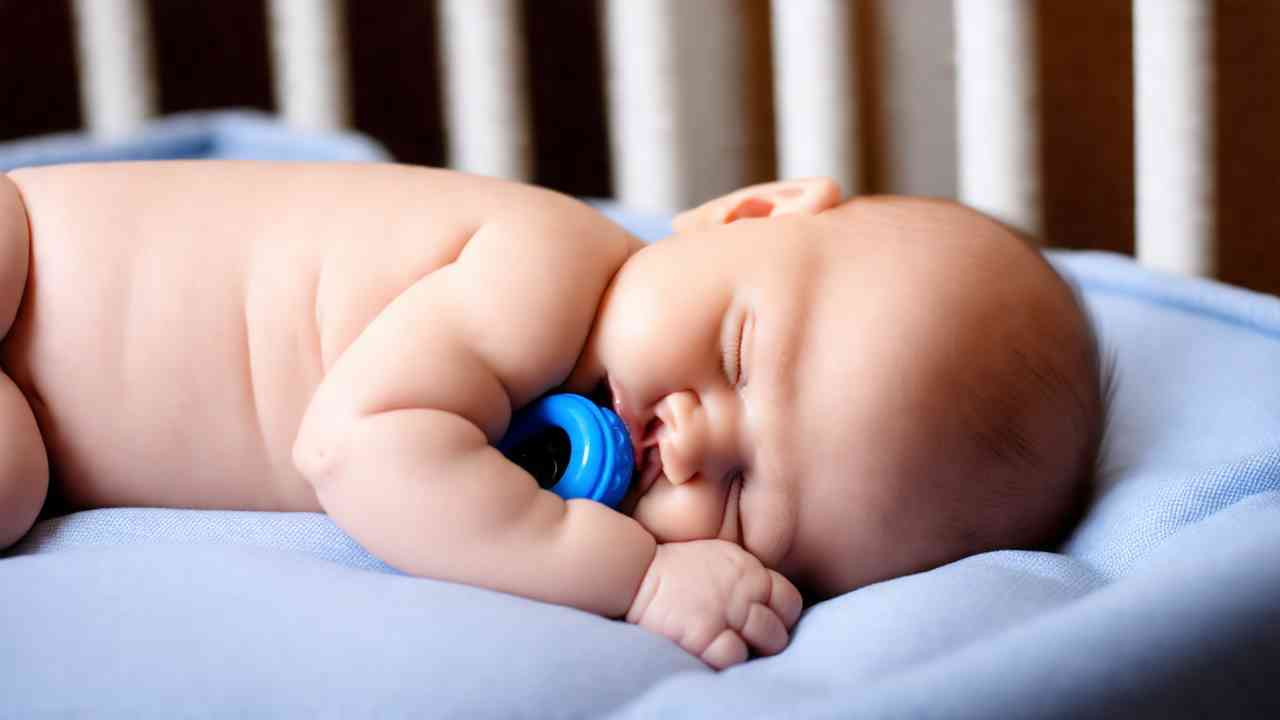
👶 Should Newborns Sleep with Pacifiers? A Parent's Safety Guide
👶 A Parent's Guide: Should Your Newborn Sleep with a Pacifier? 👶
As a new parent, you are navigating a world of new questions and conflicting advice. One of the most common debates revolves around the pacifier. Is it a helpful soothing tool or a bad habit in the making? This leads to a crucial question for exhausted parents: should newborns sleep with pacifiers?
The answer from the medical community is a strong, but qualified, yes. A pacifier can be a powerful tool for both soothing your baby and, most importantly, for their safety. However, there are some very important rules about timing and usage that you must follow.
This guide will explain the benefits and the rules. Let's get your family on the path to safer, more peaceful sleep. ✅
🤔 First, What is the Biggest Benefit? (SIDS Reduction)
This is the most important reason to consider a pacifier. The American Academy of Pediatrics (AAP) recommends offering a pacifier at nap time and bedtime. This is because multiple studies have shown that pacifier use is associated with a significantly reduced risk of Sudden Infant Death Syndrome (SIDS).
The exact reason for this is not fully understood. Theories suggest that the sucking motion helps to keep the baby in a lighter state of sleep. This may make them more easily arousable. It may also help to keep their airway open. For this reason alone, a pacifier is a valuable safe-sleep tool.
- What is the Crucial Timing Rule for Breastfed Babies?
This is the most important caveat. If you are breastfeeding, you should wait to introduce a pacifier. The common recommendation is to wait until breastfeeding is well-established. This is typically around 3 to 4 weeks of age.
The reason for this is to avoid what is sometimes called "nipple confusion." You want your baby to have a perfect latch and for your milk supply to be well-regulated before you introduce an artificial nipple. For formula-fed babies, you can offer a pacifier from the very beginning.
⭐ What Are the Safety Rules for Pacifier Use in the Crib?
If you choose to use a pacifier for sleep, you must follow these non-negotiable safety rules. This is the key to using one correctly.
- Never Force It: Offer the pacifier when you put your baby down to sleep. If they spit it out in their sleep, you do not need to put it back in.
- NO Attachments: This is the most critical safety rule. The pacifier should never be attached to your baby's clothing, a stuffed animal, or a string. These are serious strangulation and suffocation hazards.
- Keep it Clean: Sterilize your baby's pacifiers regularly, especially in the first few months, to prevent the spread of germs.
- Use a One-Piece, Age-Appropriate Model: Choose a pacifier that is a single piece of molded silicone. Two-piece models can come apart and become a choking hazard.
- Are There Any Downsides?
While pacifiers are a great tool, it is good to be aware of the potential downsides. Some studies show a link between long-term pacifier use and an increased risk of ear infections in older babies. Also, at some point, you will have to wean your child off the pacifier, which can be a challenge.
The cozy, quiet autumn evenings are a perfect time to establish a safe and comforting sleep routine for your newborn. A pacifier, when used correctly, can be a wonderful part of that. 🍂